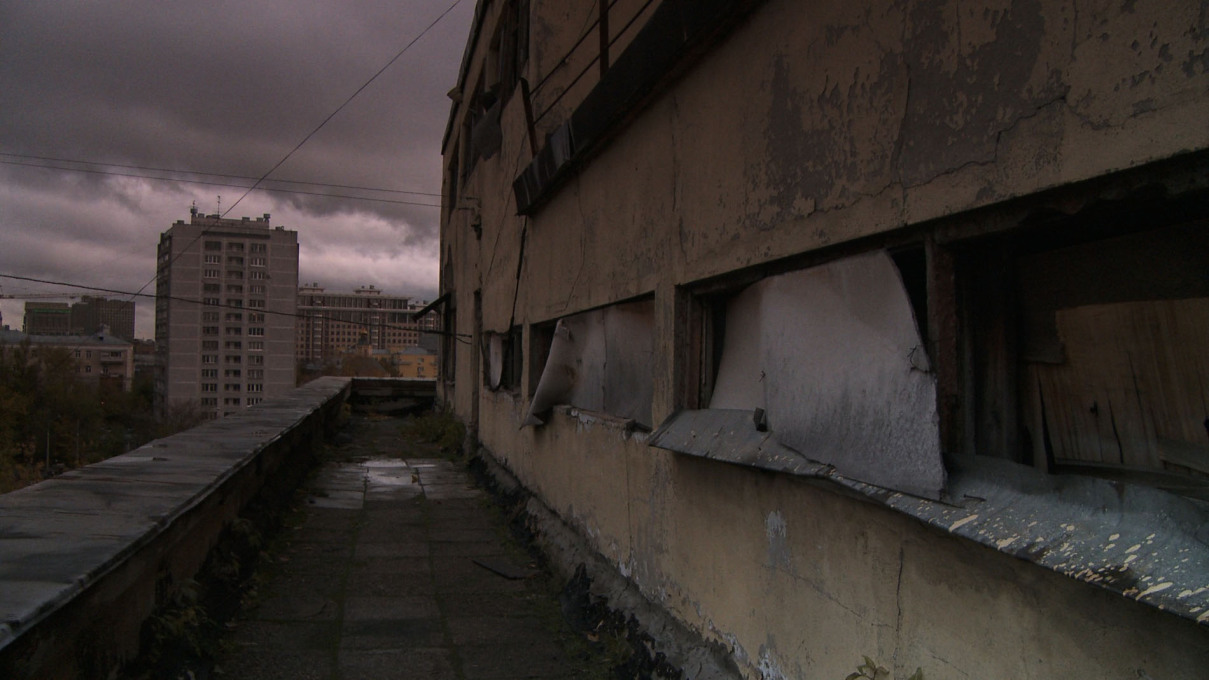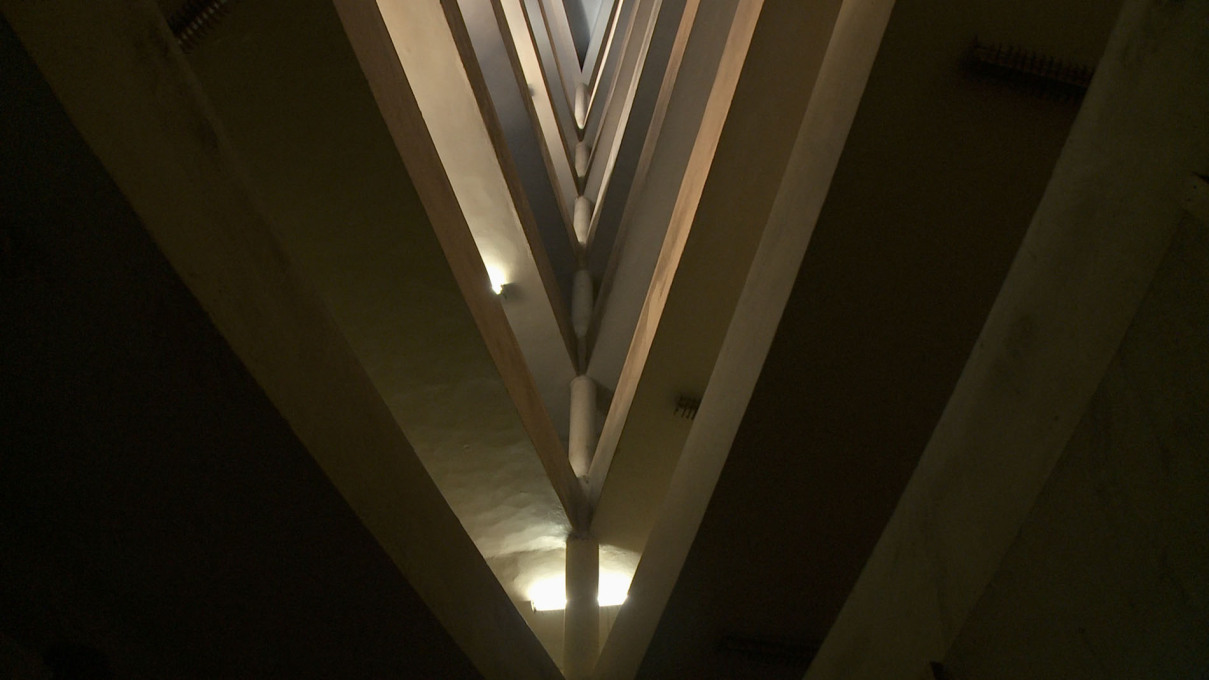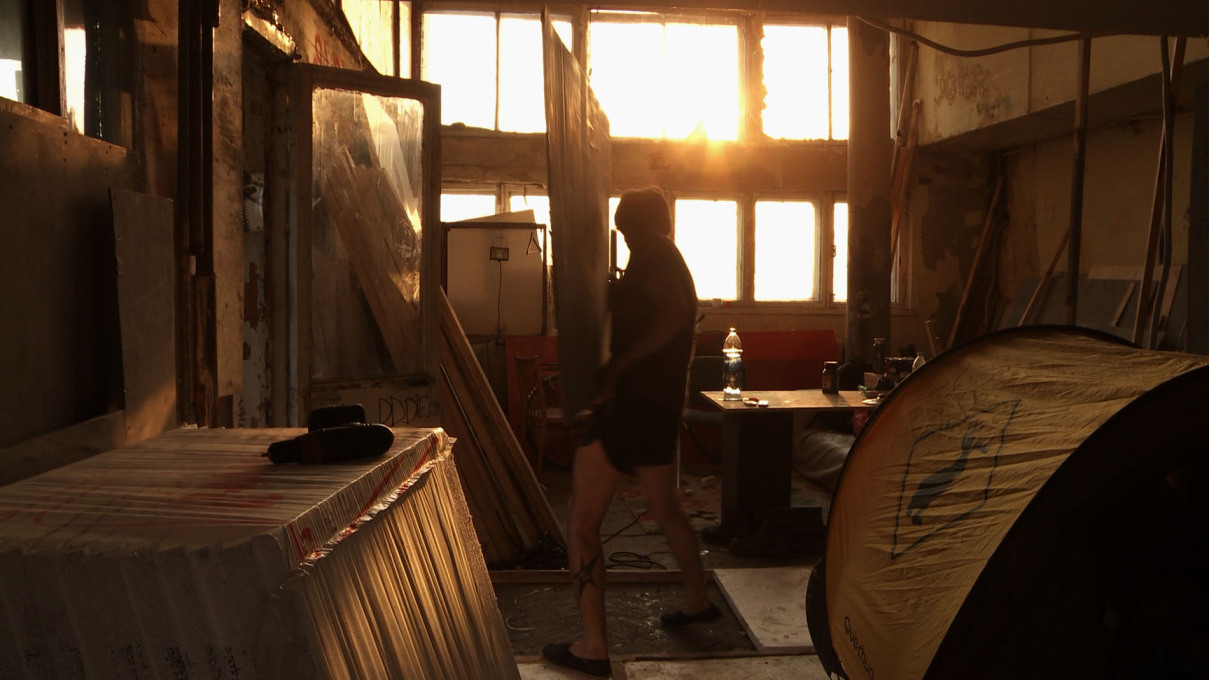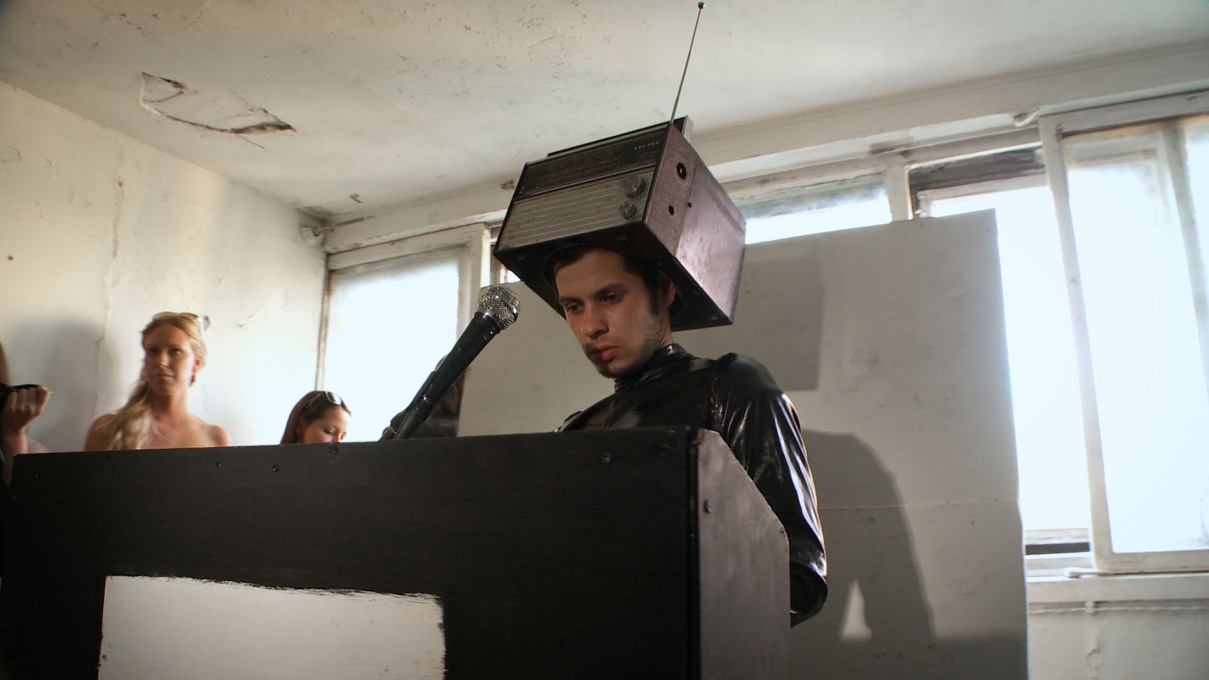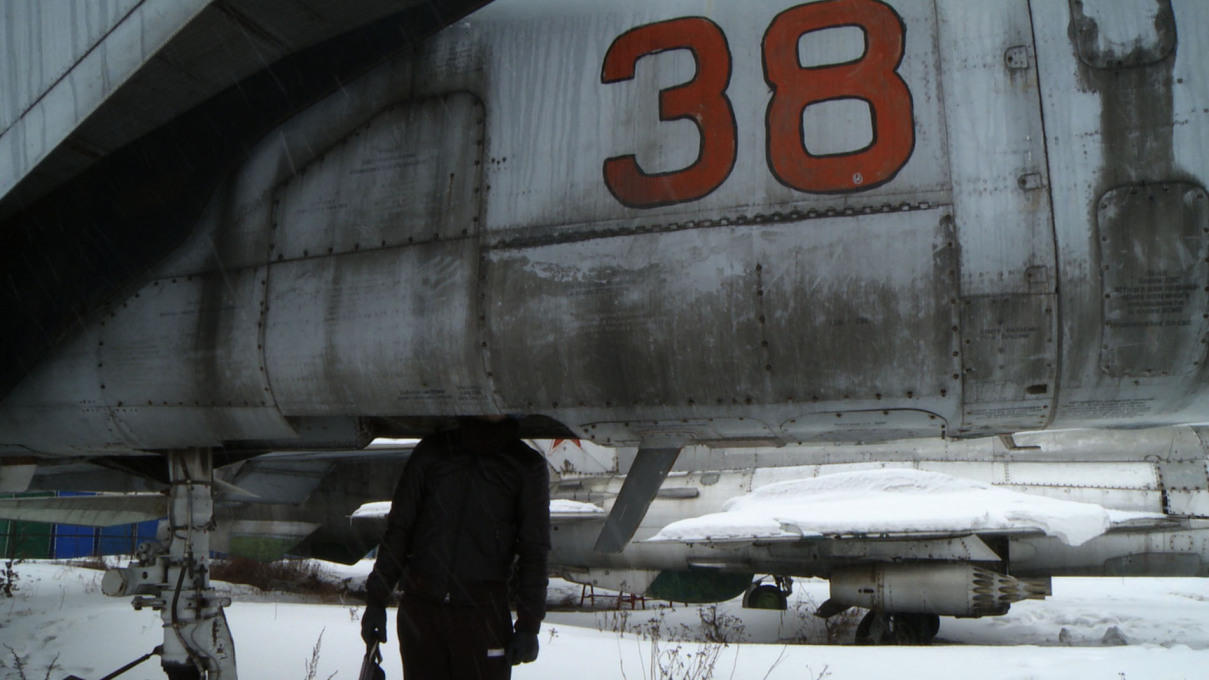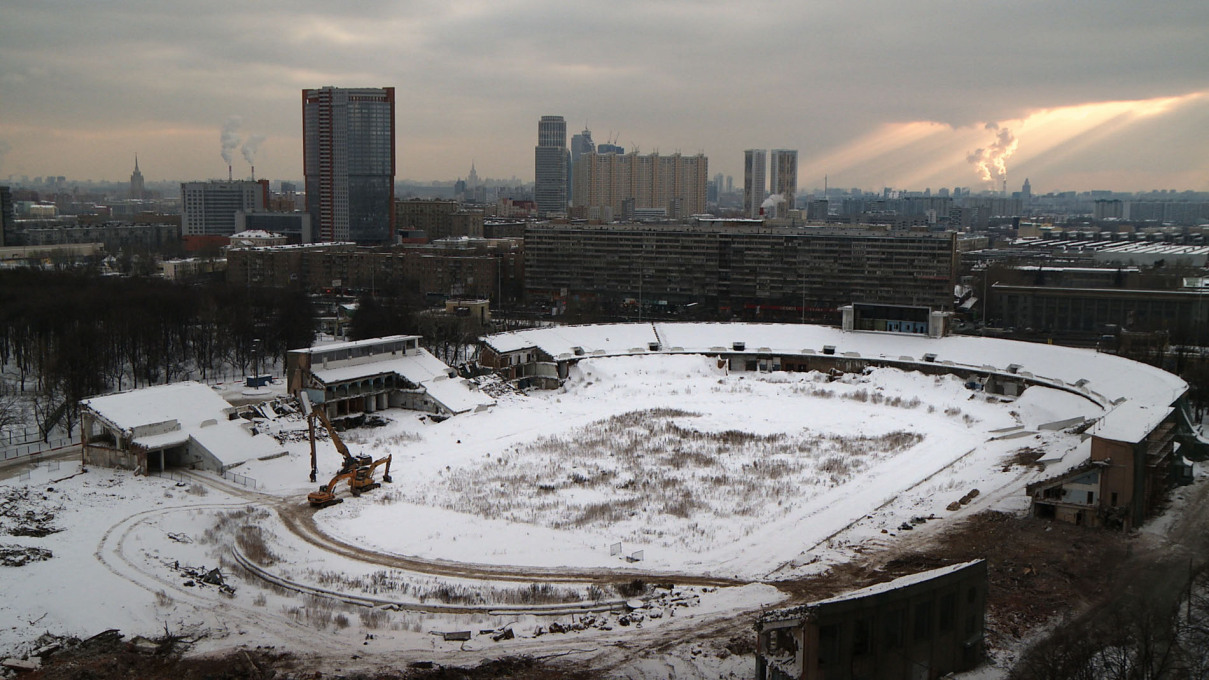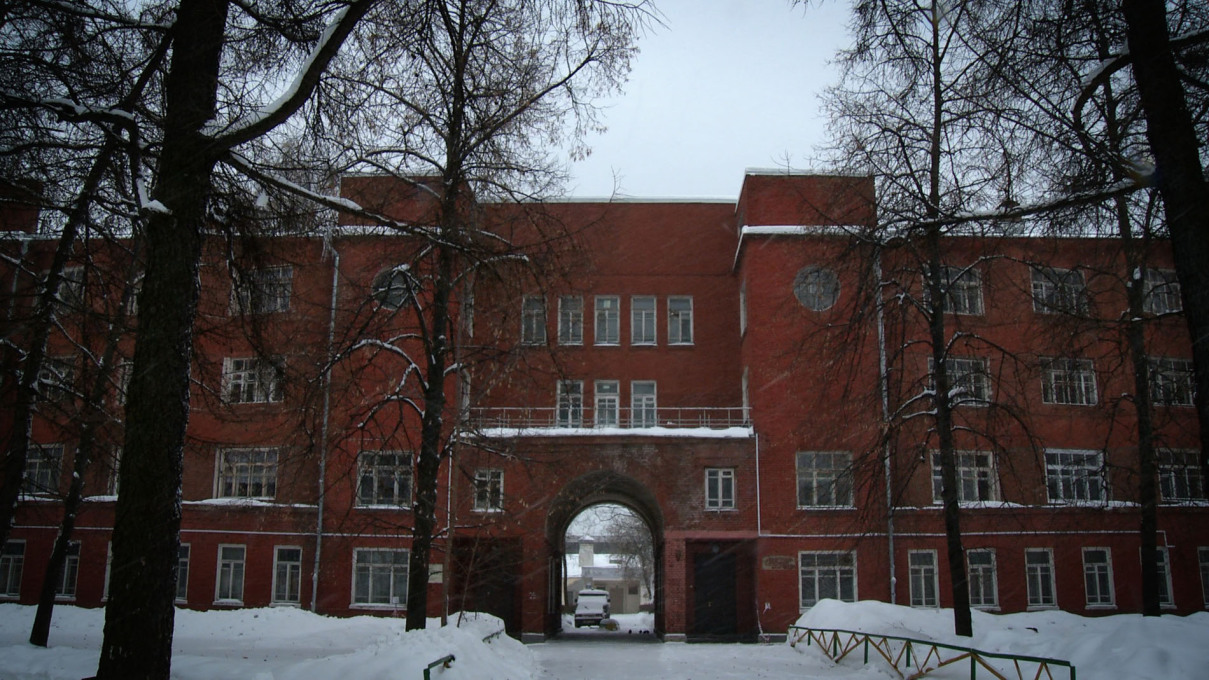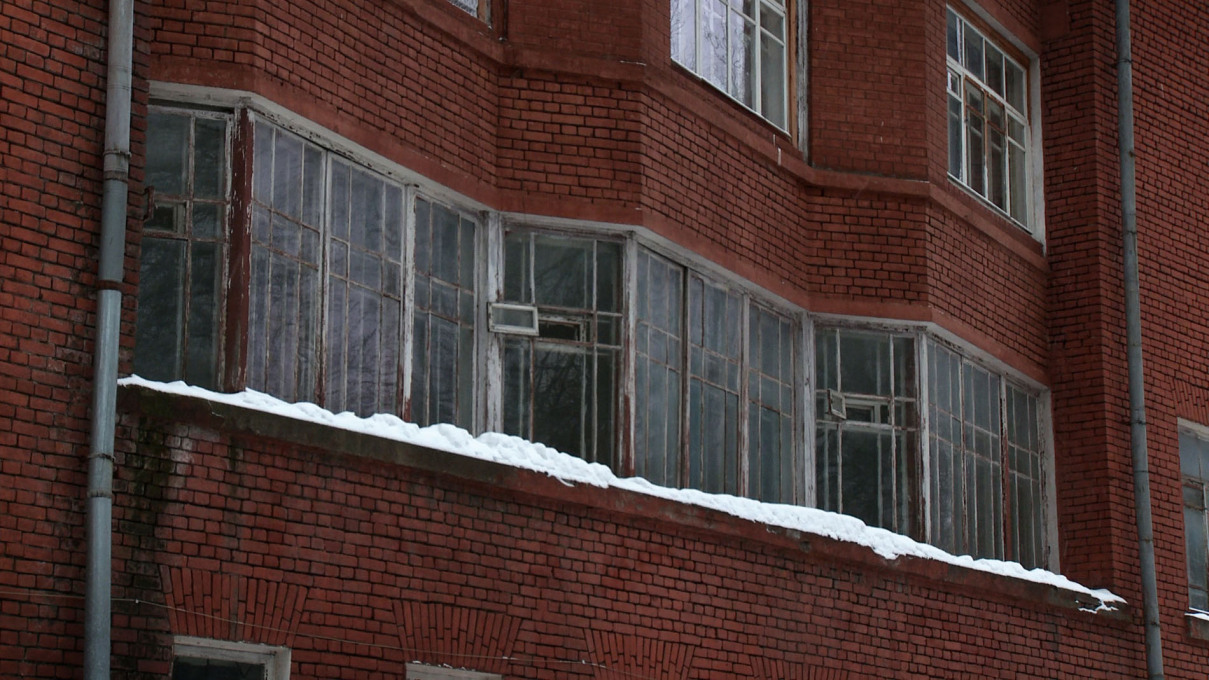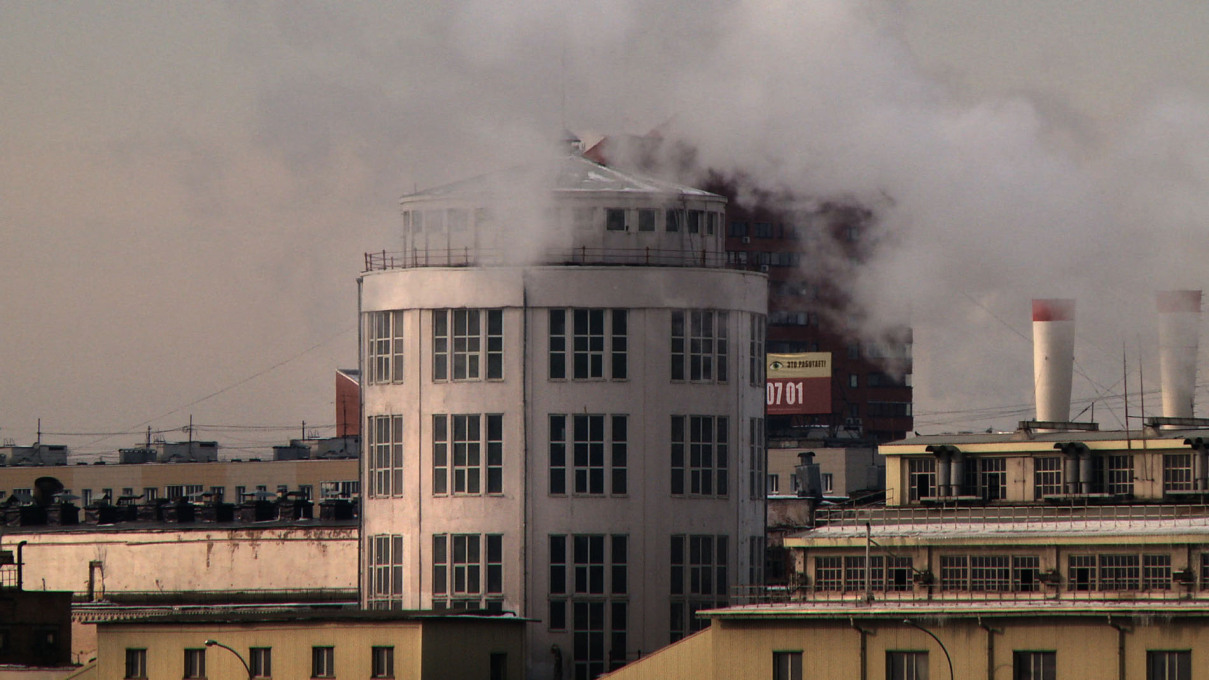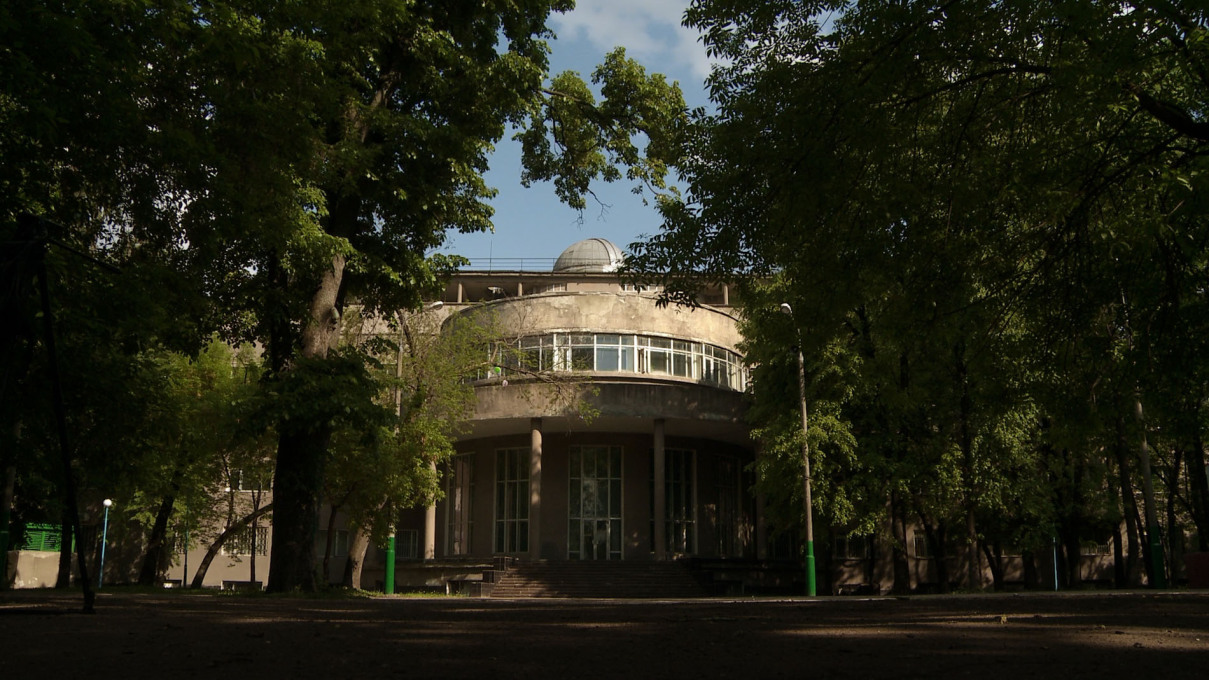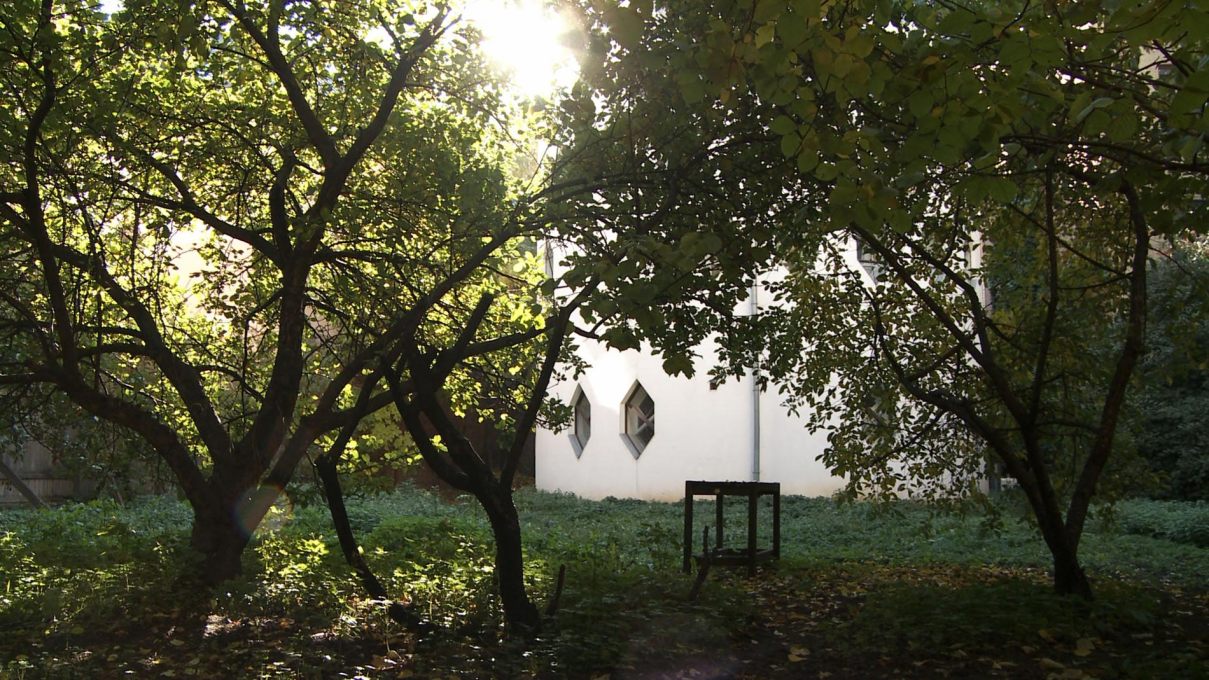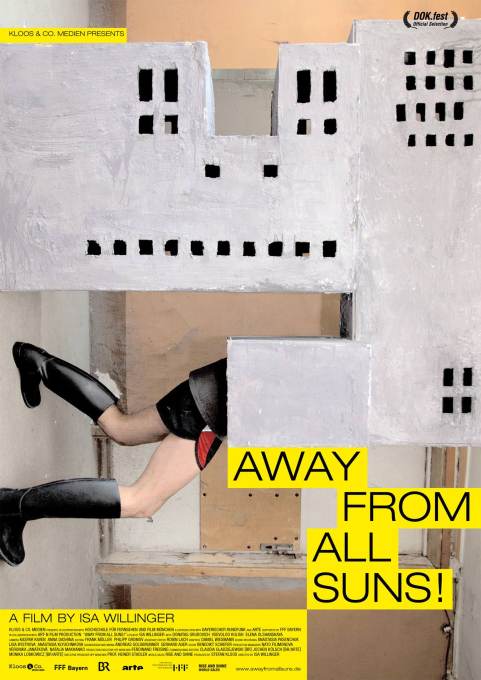Architecture was once considered fundamental to the rethinking of society and the shape it took. This is the premise of Away from All Suns! a new feature-length documentary by filmmaker Isabella Willinger, a documentary filmmaker based in Munich and Berlin, whose work focuses on gender, social upheavals and human rights. Her film examines the relics of Constructivist architecture scattered throughout Moscow and attempts to tease out what’s left of their revolutionary past. Upon their construction, these buildings embodied the emancipatory change promised and, at least for a time, instituted by the Bolshevik Revolution. Over three-quarters of a century later, suspended in a fragile purgatory between decay and demolition, structures like the Narkomfin Building (1928-30) and the Communal Student House of the Textile Institute (1929) still stun in their radical and emphatic newness.
These buildings seem to rise “from a time more modern than my own,” Willinger says at the beginning of the film. And yet they are just one part of the story. The film’s narrative juggles a cast of unconnected characters, each of whom occupies – in one sense or another – three revolutionary residences. As becomes apparent over the course of the film, their paths are intrinsically bound up with the misfortunes of their storied addresses; like the buildings themselves, they are imperiled by increasingly conservative, reactionary forces that, buoyed by a galvanized corporate sector, threaten their existence, if not that of democratic Russian society. Even so, they persist against great odds, with mixed feelings of nostalgia, hope, and helplessness.
Willinger recently premiered Away from All Suns! at the Istanbul Architecture Film Festival, where it was awarded the top prize. Ahead of its European DVD release, she talks to Sammy Medina for uncube about her film, the Soviet avant-garde, and the bleak future of Russian architecture.
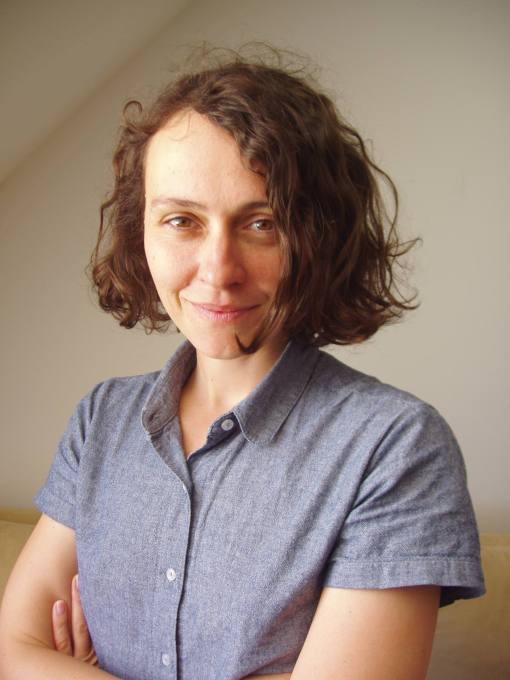
When did you first visit the modernist ruins in Moscow?
I first visited them in the summer of 2010. I was actually researching a completely different film topic in Moscow then and was not planning on making a film about them at all. On my walks through the city, I felt an affinity to the Constructivist buildings that I would come by randomly and began to photograph them. Moscow as an urban space and also as a cultural space has something very inaccessible about itself, something even unwelcoming and closed. In retrospect, I think the buildings were the only thing in Moscow’s city landscape I could visually and culturally connect with.
What was it about them that impressed you?
To me the buildings seemed like gigantic signs in the city. I have no background in architecture, so initially I wasn’t aware of the spatial and urban concepts behind them. In the course of making the film, this obviously changed, but I have never lost the sense of my initial impression. I’ve always continued to see and treat them as signs, rather than architecture.
And what are they signaling?
They speak of a time that was filled with hope and with dreams of a better future. In contrast to the popular Groysian interpretation of the avant-garde as the forerunner of the Stalinist totalitarian regime, I really feel a grand humanness in the Constructivist buildings. Whereas, according to the Stalinist paradigm, there was only one masterplan by which everybody had to create art and architecture, among the Constructivists in the 1920s, there were very many different approaches and ideas of how the “new human” should live. In this “should live,” there certainly is a streak of elitism involved – artists were designing the lives of the working class – but the buildings’ vibrant, experimental and humanistic spirit to me is much stronger.
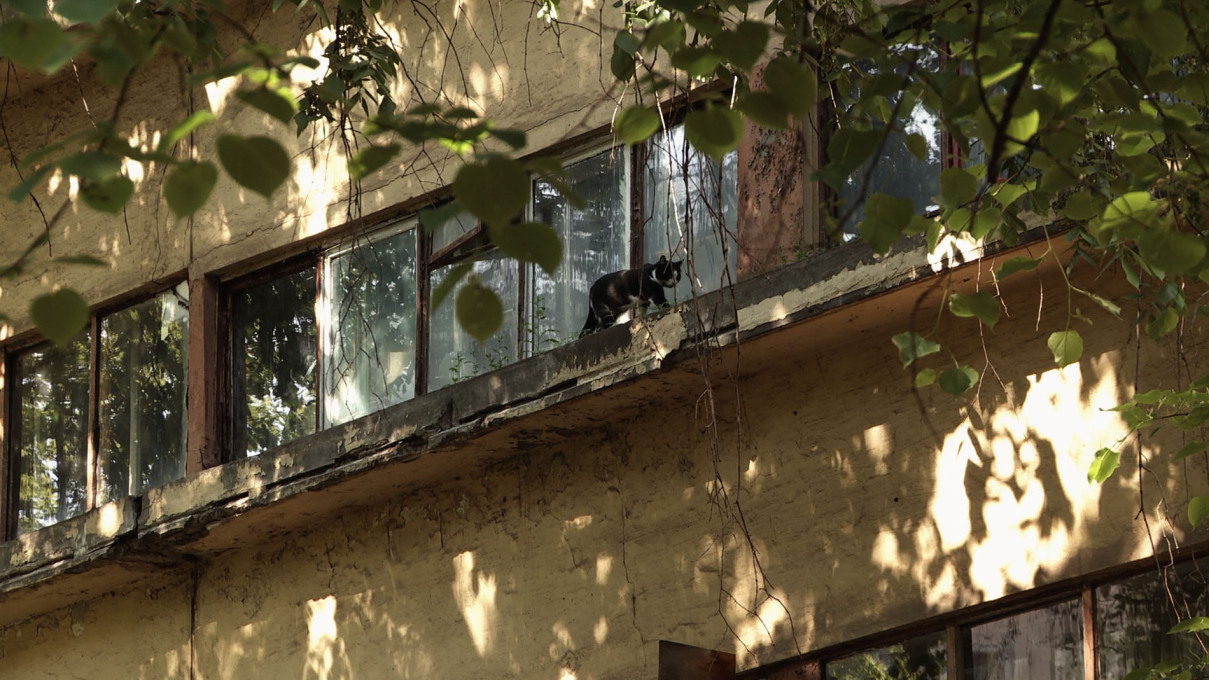
Your film tells the story of three buildings of the Soviet avant-garde: the Communal Student House of the Textile Institute (1929), the Printing Plant Ogoniok & Apartment House Zhurgaz (1930-35), and the Narkomfin Building (1928-30). Why did you choose these three buildings over other well-known works from the period, such as the Melnikov House or the Rusakov Workers Club?
The film portrays the relationship between the buildings and the people who inhabit them. But the choice was made according to dramaturgic and practical principles. I had to find inhabitants who would make good protagonists for a film, people who’d make it possible to tell a story – and a story means conflict and development. I would have loved to include the Melnikov House, but it was very difficult to get access to and it proved to be impossible to work with Melnikov’s granddaughter who inhabits the house. The Rusakov Workers Club hosts a theater company today. The management there didn’t allow me to work with the person in the company that I had initially found interesting for the film.
What parallels and discontinuities do you see – architecturally, culturally, or otherwise – between 1920s Moscow and today? And how are these observations depicted in the film?
If the 1920s was a period of visionary projects and hope, then today Moscow drowns in stagnation. Putin has installed a neo-tsarist regime. When a wave of protests was building up in 2011 and early 2012 after election fraud, there was hope of possible change in the air in Moscow and St. Petersburg. This wave has receded, however, and frustration has taken its place. But history will move forward.
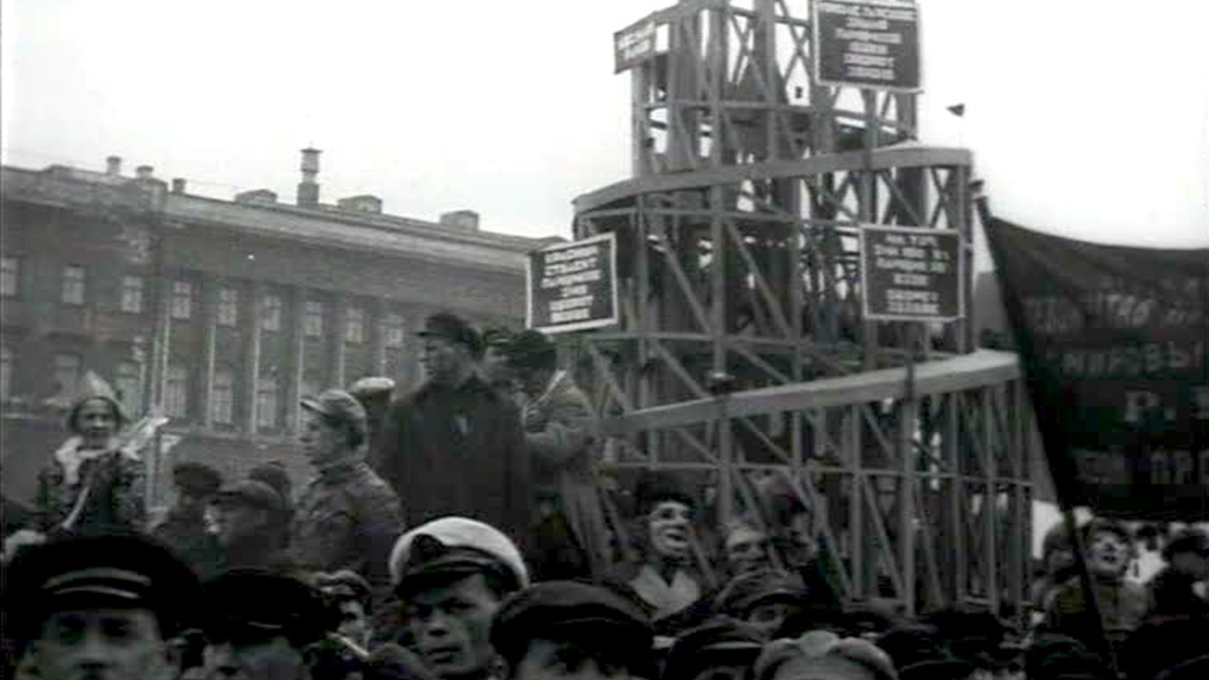
Architecturally, there’s hardly anything interesting being built, let alone idealistic. But even in mediocre contemporary Russian architecture one can sometimes spot the influence of the Constructivist proportions and use of forms – just by surviving, these buildings continue to secretly leave their mark on the city, even in the design vocabulary of mediocre architects.
What is the state of Constructivist architecture in Moscow today? If the question can be asked, what can contemporary architecture learn from these buildings?
The state of Constructivist architecture is somber. There are some grassroots organizations in Russia that are trying to raise the awareness of the importance of those buildings for Russia’s cultural history. But compared to the power of the financial interest of real estate developers and investors, they can only do very little. It’s nice that there seems to be a growing interest in the buildings among young people, though, which may signal a possible future cultural shift.
What I personally like about the Constructivist buildings is the use of organic materials, like wood, which is in tension with the strict geometric shapes. It softens them and gives them organic warmth. The huge windows admit lots of light and air, creating a pleasant living space. I also think that including communal areas in a building, like a collective sunroof, could help us today to strengthen contemporary society. Services such as built-in day care and kindergartens – as at the Narkomfin – are also extremely progressive and very much ahead of us today.
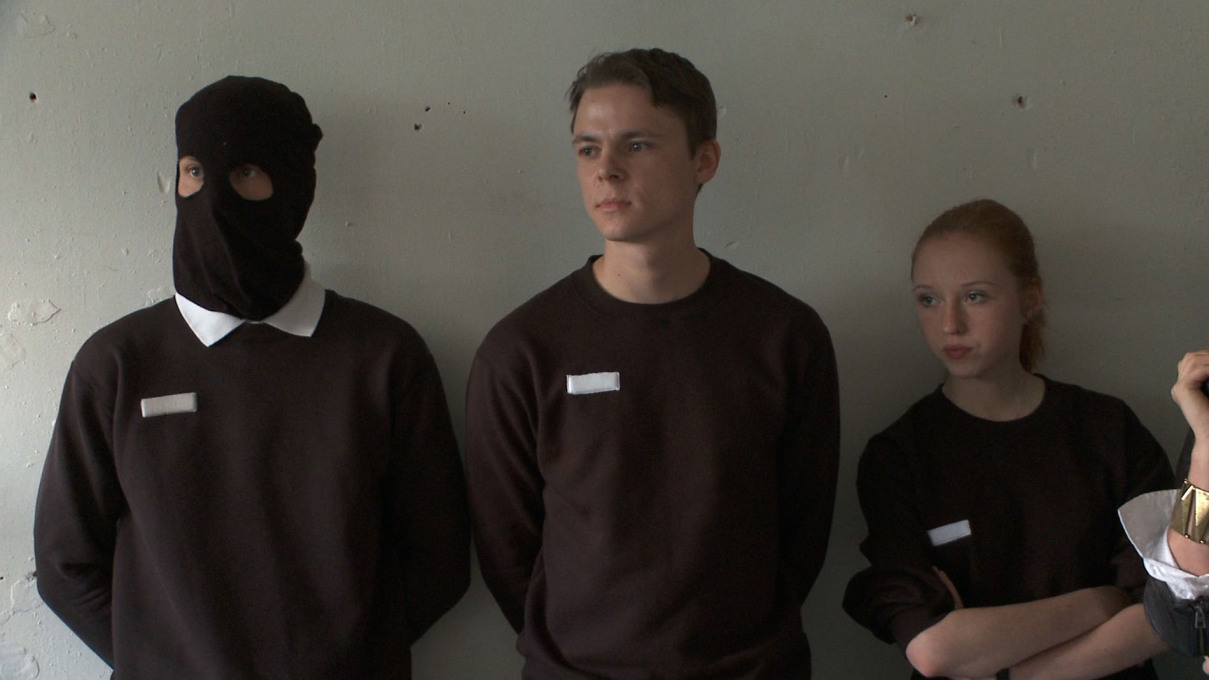
How has the film been received in Russia?
The film has been received with great interest in Russia, although I also noticed some reluctance regarding my positive interpretation of the utopian socialist culture of the 1920s. In Russia, people tend to dislike anything connected to communism. The film, however, had an overwhelmingly positive reception in Istanbul, where there is currently a very active protest movement, Consequently, they may be able to appreciate the utopian impetus of these buildings more.
Are you working on any new projects?
I would like to make another film connected to Constructivism and am in the beginning stages of planning another. It will focus on the photographer Richard Pare, specifically his work on surviving Constructivist buildings today. But we are only in the process of finding financing for it.
– Sammy Medina is a writer and architecture critic based in New York.
Away from All Suns!
Documentary, Germany 2013 (ca. 79 min./55 min.)
Director: Isa Willinger
Production: Kloos & Co. Medien
World Sales: Rise and Shine
The film will be screened in LA and Chicago in April as part of their Architecture and Design Film Festivals.




